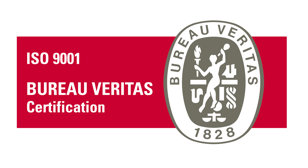Article

Personalised medicine claims in Europe
Personalised medicine is considered as the future of healthcare. It aims at providing therapies tailored to each patient’s individual profile so as to specifically target patients who would most benefit from a treatment (thereby sparing patients for whom said treatment would be inefficient or deleterious). Such inventions can thus solely reside in the specific identification and selection of a patient subgroup and not on a new treatment. This subgroup is generally identified based on specific biomarkers such as gene expression levels, mutations, methylation degree etc…
Personalised medicine claims are generally drafted as follows:
“Compound X for use in a method of treatment of disease Y characterised in that the patient has [or “has been selected as having”] the genetic marker Z” (second medical use claims)
Or, alternatively,
“Method of predicting whether a patient suffering from disease Y will respond to treatment with Compound X, said method comprising a step of determining the presence of genetic marker Z in a sample obtained from the patient“ (prediction/prognostic/diagnostic claims)
This type of claim raises specific patentability issues which, until very recently, were not clearly settled. Indeed, as mentioned above, personalised medicine inventions can, for instance, be based on the new identification of a patient subgroup that would most benefit from a known treatment. This, however, implies that this specific group of patient had already been treated with said treatment among all the patients previously treated with said treatment. Can the selection for treatment of this specific group of patients fulfil the novelty requirement, i.e. be patentable under the European Patent Convention?
Several decisions have discussed this issue in the last 10 years. However, no consensus had clearly been reached. Some decisions e.g. introduced criteria according to which personalised a medicine claim cannot be considered as novel if the subgroup identified largely overlaps with the group previously treated, or if the choice of the novel subgroup is “arbitrary”.
This, however, changed in 2019 with decision T0694/16.
This case related to a personalised medicine claim according to which a specific composition was specifically administered to prodromal patients (i.e. patients who do not suffer from senile dementia but have an increased likelihood to develop senile dementia such as Alzheimer’s disease). The patent provides specific markers (also referred to as “CSF markers” allowing for the specific identification of prodromal patients. The Patent further shows that prodromal patients can be distinguished from dementia patients.
The Opposition Division revoked the patent as lacking novelty in view of documents teaching the use of the claimed composition for the treatment and prevention of AD. The Opposition Division thus considered that specific subgroup of patients identified in the patent had inherently been treated in the prior art documents.
The Board of Appeal, however, did not arrive at the same conclusion.
According to the Board of Appeal, “the skilled person would promptly understand that the purpose of the treatment is to target selectively prodromal patients identified by the CSF markers, rather than other subjects that do not display the markers. This implies that there is a functional relationship between the markers that characterise the patients and the therapeutic effect which is sought. The presence of this functional relationship confirms that the purposive selection of patients is an essential technical feature qualifying claim 1. This has to be taken into account when assessing novelty” (emphasis added – see section 5.10 of T0694/16)
The question of “inherency” is thus irrelevant when assessing novelty (this statement is supported by decision G2/88 of the Enlarged Board of Appeal).
The Board of Appeal further considered that “the issue of whether patients displaying the markers of claim 1 were present among a population of previously treated patients and were already "inevitably" or "inherently" treated is irrelevant for assessing novelty in the present case. The only thing which counts is that D1 and D3 do not disclose a method whereby a patient or a group of patients displaying the relevant CSF markers but not affected by dementia was purposively and selectively targeted for carrying out the preventive treatment defined in claim 1” (see point 5.14 of the decision).
In conclusion, this decision thus clearly and unambiguously indicates that in order to anticipate a claim pertaining to personalised medicine, a prior art document has to teach the specific selection and targeting of the subgroup of patients identified in the claims.
It is noteworthy that the above decision is now considered as a reference for establishing the standard rules to be applied when assessing the novelty of personalised medicine claims.
The position taken by the EPO is thus clearly in favour of inventions pertaining to personalised medicine. This, however, strikingly differs from the practice in other jurisdictions, such as in the US, where the doctrine of inherency clearly hinders the patentability of the claims.
























